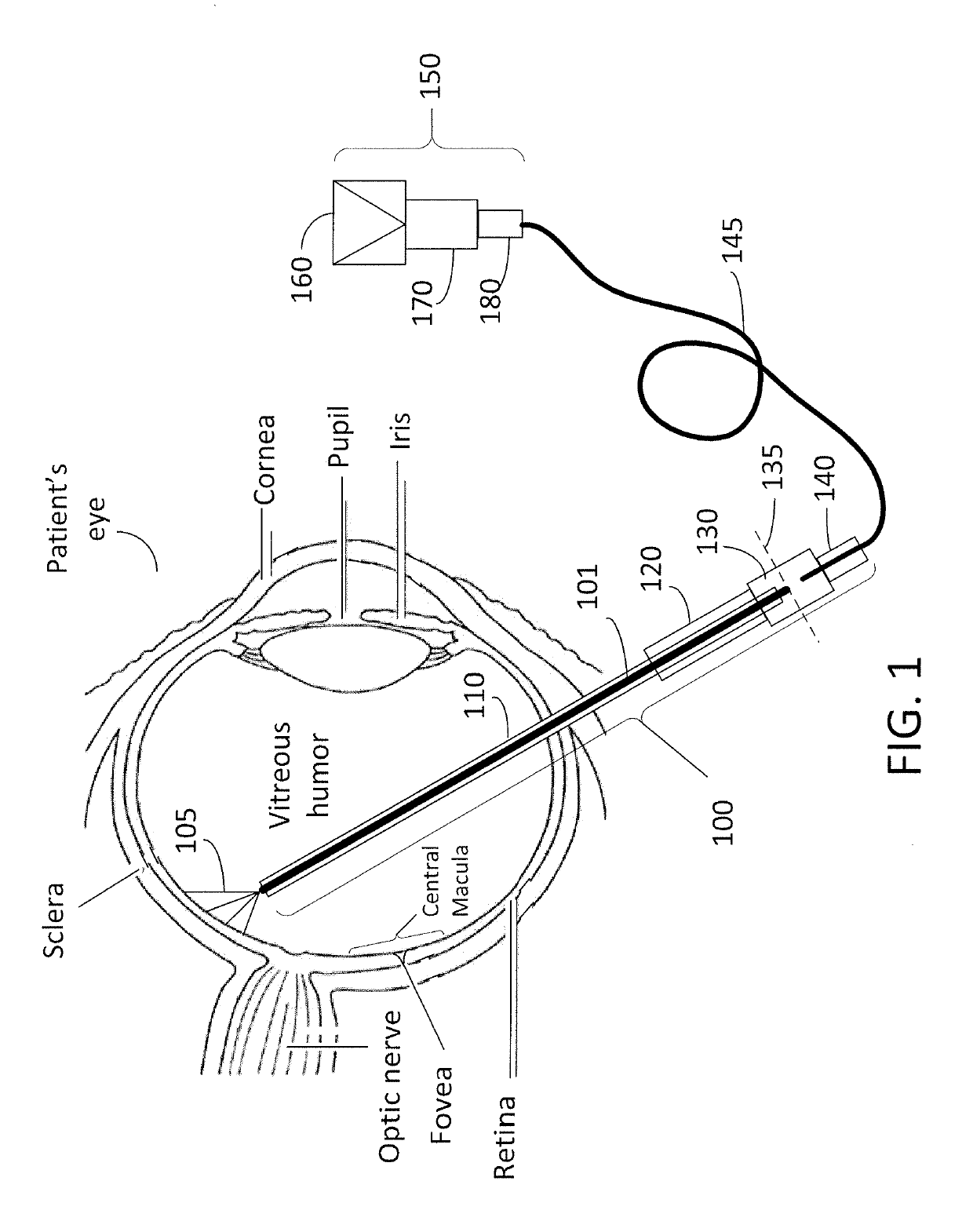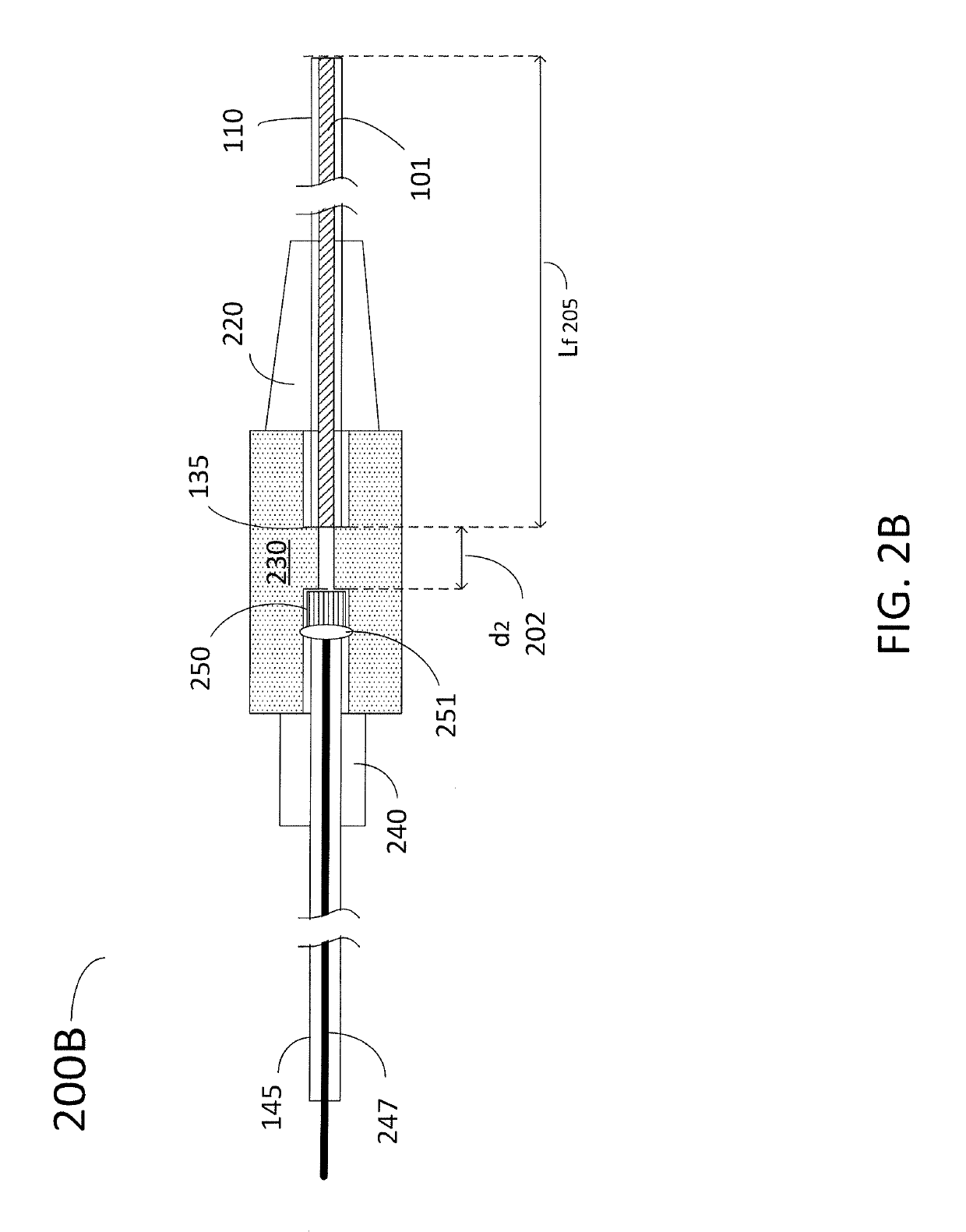Grin fiber multi-spot laser probe
a laser probe and fiber technology, applied in the field of laser probes, can solve the problems of increasing the diameter of the probe at the distal end, increasing the invasiveness of the procedure, and increasing the cos
- Summary
- Abstract
- Description
- Claims
- Application Information
AI Technical Summary
Benefits of technology
Problems solved by technology
Method used
Image
Examples
Embodiment Construction
[0019]Laser photocoagulation therapy addresses ocular conditions such as retinal detachments and tears as well as proliferative retinopathy resulting from diseases such as diabetes. The abnormally high blood sugar in a diabetic patient stimulates retinal vessels to release growth factors that in turn encourage an undesirable proliferation of blood vessels and capillaries over the retinal surface. These proliferated blood vessels are delicate and will readily bleed into the vitreous humor. The body responds to the damaged vessels by producing scar tissue, which may then cause the retina to detach and eventually cause blindness.
[0020]FIG. 1 shows a surgical probe 100 adapted for producing a multi-spot laser beam 105 for retinal photocoagulation procedures emitted from a gradient index (GRIN) fiber 101 according to some embodiments. Probe 100 can be inserted in the patient's eye through an incision and illuminates a portion of the retina with beam 105. Probe 100 may include a cannula 1...
PUM
| Property | Measurement | Unit |
|---|---|---|
| diameter | aaaaa | aaaaa |
| diameter | aaaaa | aaaaa |
| diameter | aaaaa | aaaaa |
Abstract
Description
Claims
Application Information
 Login to View More
Login to View More - R&D
- Intellectual Property
- Life Sciences
- Materials
- Tech Scout
- Unparalleled Data Quality
- Higher Quality Content
- 60% Fewer Hallucinations
Browse by: Latest US Patents, China's latest patents, Technical Efficacy Thesaurus, Application Domain, Technology Topic, Popular Technical Reports.
© 2025 PatSnap. All rights reserved.Legal|Privacy policy|Modern Slavery Act Transparency Statement|Sitemap|About US| Contact US: help@patsnap.com



